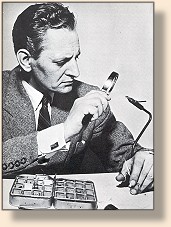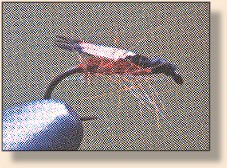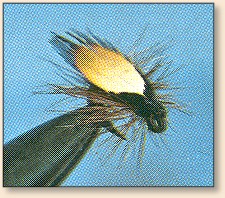Jassid
Compiled by Deanna Birkholm
 Publisher's Note:
Publisher's Note:
The Jassid is an a 'historical' fly, one seldom seen in
today's liturature. Vince Marinaro wrote about it in his
A Modern Dry Fly Code and it is his instruction
and drawings shown here. Quoting Dick Surrette as to the
importance of this fly, "Tied to copy small forms of food
just under the surface film, as fish will rise and take this
form of food awash, and not on the surface as suspected.
A very good fly for late season angling when the trout are
selective." Vince would disagree about 'under the surface film'.
Whether you think it rides in/on the surface film or just
under it, we hope you will tye it and give it a try on
your pickest trout. Shown below is Dick Surrette's tie for the Jassid.

Materials: Jassid
- Hook: 20 short or 22 regular, Model Perfect.
- Body: Tying silk, any color.
- Wings: One medium to small jungle cock nail, any color.
- Hackle: 2 or 3 very small ones turned as for a
ribbing hackle, any color and as short-fibred as possible.
Tying Steps:

1. Dress the hook. Tie in hackle and the bend of the hook and wind front.

2. Spiral the hackle to the front.
|





 Publisher's Note:
Publisher's Note:

